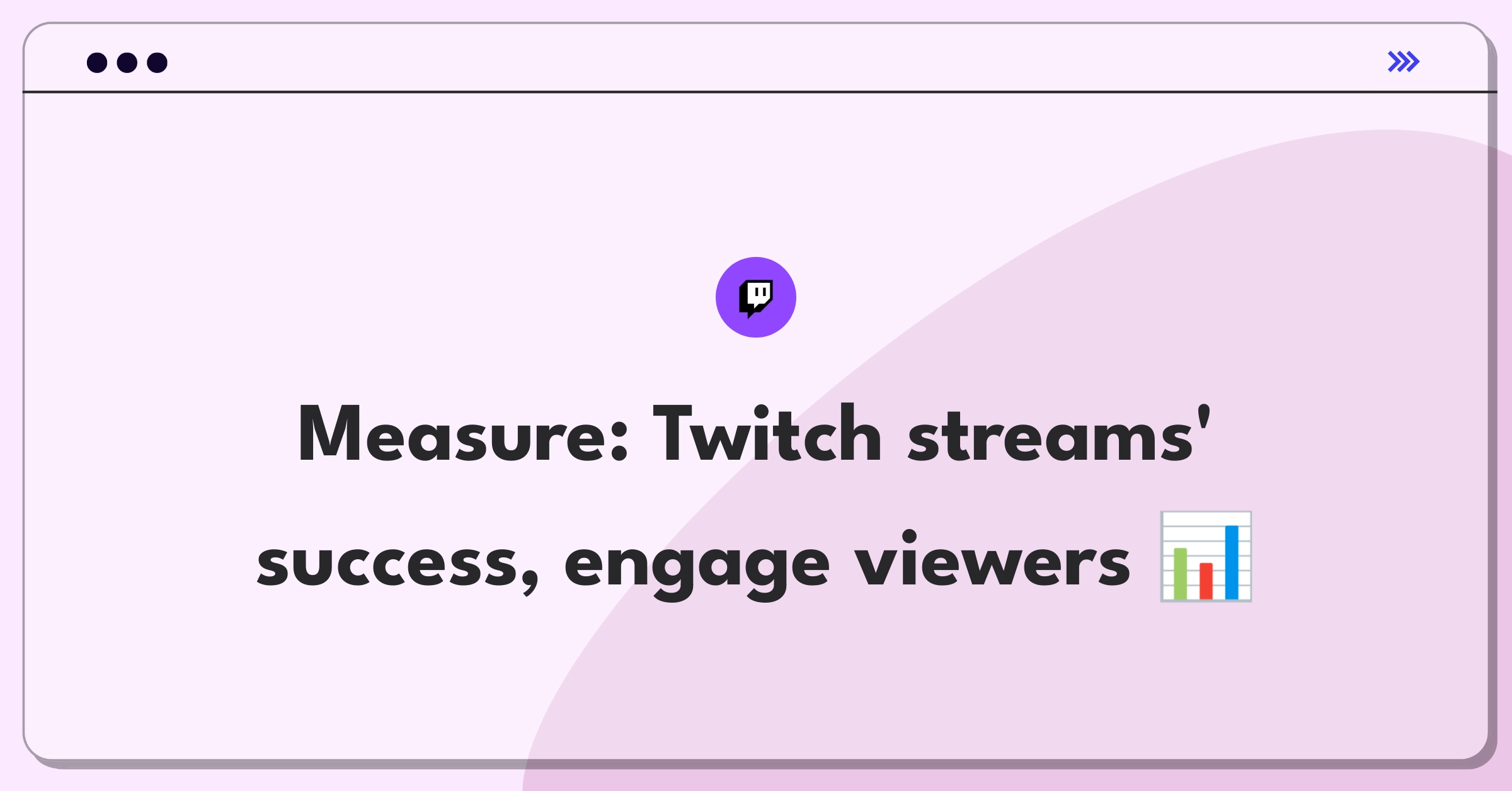Introduction
Measuring the success of Twitch's live streaming feature requires a comprehensive approach that considers multiple stakeholders and metrics. To effectively evaluate this core product functionality, I'll follow a structured framework covering key success indicators, supporting metrics, and potential risks while keeping all stakeholders in mind.
Framework Overview
I'll follow a simple success metrics framework covering product context, success metrics hierarchy, and strategic initiatives.
Step 1
Product Context
Twitch's live streaming feature is the platform's cornerstone, allowing content creators to broadcast live video content to viewers in real-time. Key stakeholders include:
- Streamers (content creators)
- Viewers
- Advertisers
- Twitch (platform)
The user flow typically involves:
- Streamers set up their stream and go live
- Viewers discover and watch streams
- Interaction occurs through chat, donations, and subscriptions
- Advertisers reach audiences through pre-roll, mid-roll, and display ads
This feature is central to Twitch's strategy as a leading live streaming platform, differentiating it from VOD-focused competitors like YouTube. Twitch competes with platforms like YouTube Gaming and Facebook Gaming, but maintains a strong market position due to its gaming focus and community features.
In terms of product lifecycle, live streaming is in the mature stage for Twitch, but the company continually innovates to maintain its edge.
Subscribe to access the full answer
Monthly Plan
The perfect plan for PMs who are in the final leg of their interview preparation
$99 /month
- Access to 8,000+ PM Questions
- 10 AI resume reviews credits
- Access to company guides
- Basic email support
- Access to community Q&A
Yearly Plan
The ultimate plan for aspiring PMs, SPMs and those preparing for big-tech
$99 $33 /month
- Everything in monthly plan
- Priority queue for AI resume review
- Monthly/Weekly newsletters
- Access to premium features
- Priority response to requested question


.png)